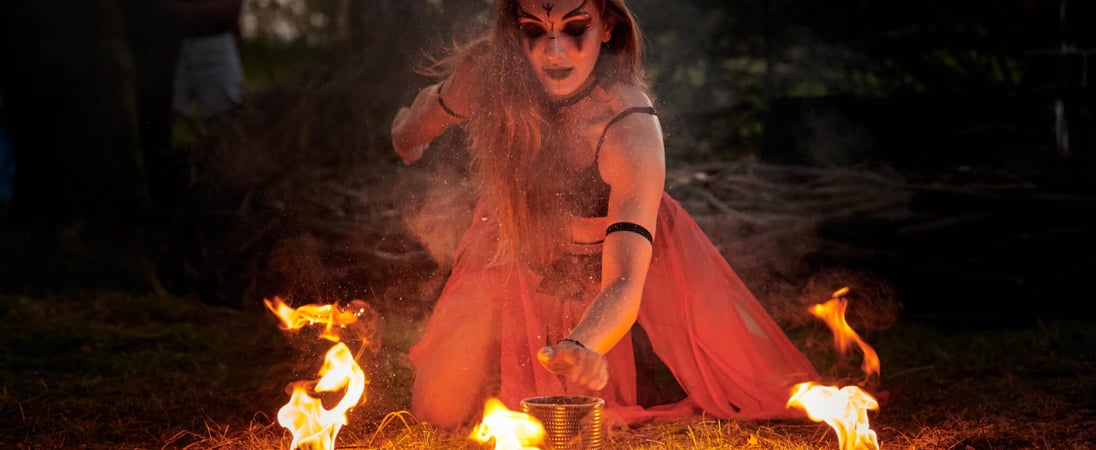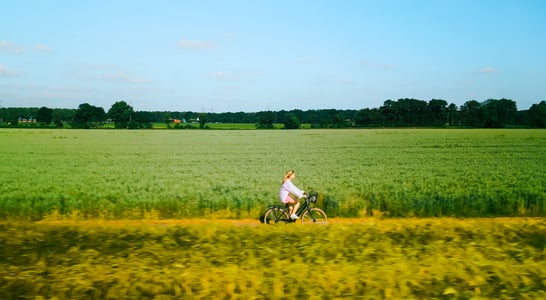
Samhain
Samhain is a vibrant festival that marks the end of the harvest and the onset of winter.
Samhain is celebrated from October 31 to November 1. It is a time when the veil between the living and the dead is believed to be at its thinnest.
During Samhain, people believed that spirits could more easily enter our world. For many, it was a powerful moment for communication with the dead and divination for the future.
The importance of Samhain extends beyond just a seasonal marker. It is a deeply spiritual time for reflection and honoring ancestors.
People believe that the presence of otherworldly spirits enhances their ability to perceive what the coming year holds. This connection with the spiritual realm is integral to the festival’s significance. In addition, there are various rituals and legends associated with the day.
Over the centuries, Samhain has been influenced and reshaped by other cultural practices and celebrations. It is considered the precursor to modern Halloween, with many traditions, such as trick-or-treating and carving jack-o’-lanterns, evolving from ancient Samhain customs.
These practices were carried to America by Irish and Scottish immigrants, further blending and evolving with local traditions to form the Halloween we know today.
History of Samhain
Samhain marks an important transition from the lighter half of the year to the darker, colder months ahead.
This period indicated the time when the separation between the living and the spiritual realms was thinnest. This belief made Samhain a critical time for ancient Celts to connect with the spirits of the departed.
To do so, they developed various rituals and divination practices to foretell the future.
Historically, Samhain was much more than just a precursor to modern Halloween. It was a comprehensive festival involving bonfires, feasting, and honoring ancestors. The bonfires, in particular, were believed to have protective and cleansing powers.
Families would engage in “dumb suppers,” a meal eaten in silence to honor the dead who were believed to be present with them.
Over time, as Christianity spread through the Celtic lands, Samhain began to merge with Christian traditions. By the 9th century, it had been intertwined with All Saints’ Day on November 1st and All Souls’ Day on November 2nd, creating a blend of pagan and Christian practices that laid the groundwork for contemporary Halloween.
The traditions of Samhain endured through migrations and cultural transformations. For instance, Irish and Scottish immigrants carried their Samhain customs to North America in the 19th century.
There, they evolved into the Halloween practices we recognize today, such as trick-or-treating and carving jack-o’-lanterns, originally made from turnips in Ireland and Scotland before pumpkins became the norm in America.
How to Celebrate Samhain
Celebrating Samhain can be both mystical and delightful with these quirky and playful suggestions:
Spark Up the Bonfire Night
Nothing says Samhain like the crackle of a bonfire under the cool autumn sky. Gather friends and family to share stories or jump over the flames for purification, a centuries-old tradition.
It’s a perfect way to light up the darker evenings and bring warmth to the celebration.
Feast with the Spirits
Host a sumptuous feast to honor the changing seasons and the spirits. Fill your table with autumnal delights like apples, pumpkins, and root vegetables. It’s a time-honored way to celebrate the final harvest and perhaps invite the spirits of ancestors.
Craft Waxy Autumn Leaves
Get crafty by making waxed leaves to capture the essence of autumn. This activity can decorate your space and connect you to the ancient Celtic roots of Samhain.
It’s a beautiful method to preserve the fleeting beauty of fall leaves as part of your Samhain décor.
Divinatory Delights
Engage in some divination to peer into the future. Whether you prefer tarot cards, runes, or scrying with a mirror, Samhain is a potent time for such mystical practices.
Costume Cavalcade
Dress up in costumes to confuse and mingle with the spirits. Historically, people wore disguises to protect themselves from malevolent spirits by blending in with them. Today, it adds an element of fun and mystery to the festivities, allowing everyone to express their creativity.
Also on ...
View all holidaysNational Name Your Car Day
You can’t truly love your car until you give it a name. Consider your car’s quirks and personality and come up with a fitting name, or try a Car Name Generator.
Mean Girls Day
Embracing the iconic humor, camaraderie, and memorable moments of a beloved cinematic classic that resonates with audiences.
National Good Buddy Day
Inspired by connectivity crackling through the airwaves, shared tales echo like a convoy's camaraderie—Good Buddy vibes resonate.
We think you may also like...
St. Andrew’s Day
Celebrated for his kindness and valor, the patron saint of Scotland's legacy lives on through the Scottish flag and the country's traditions.








